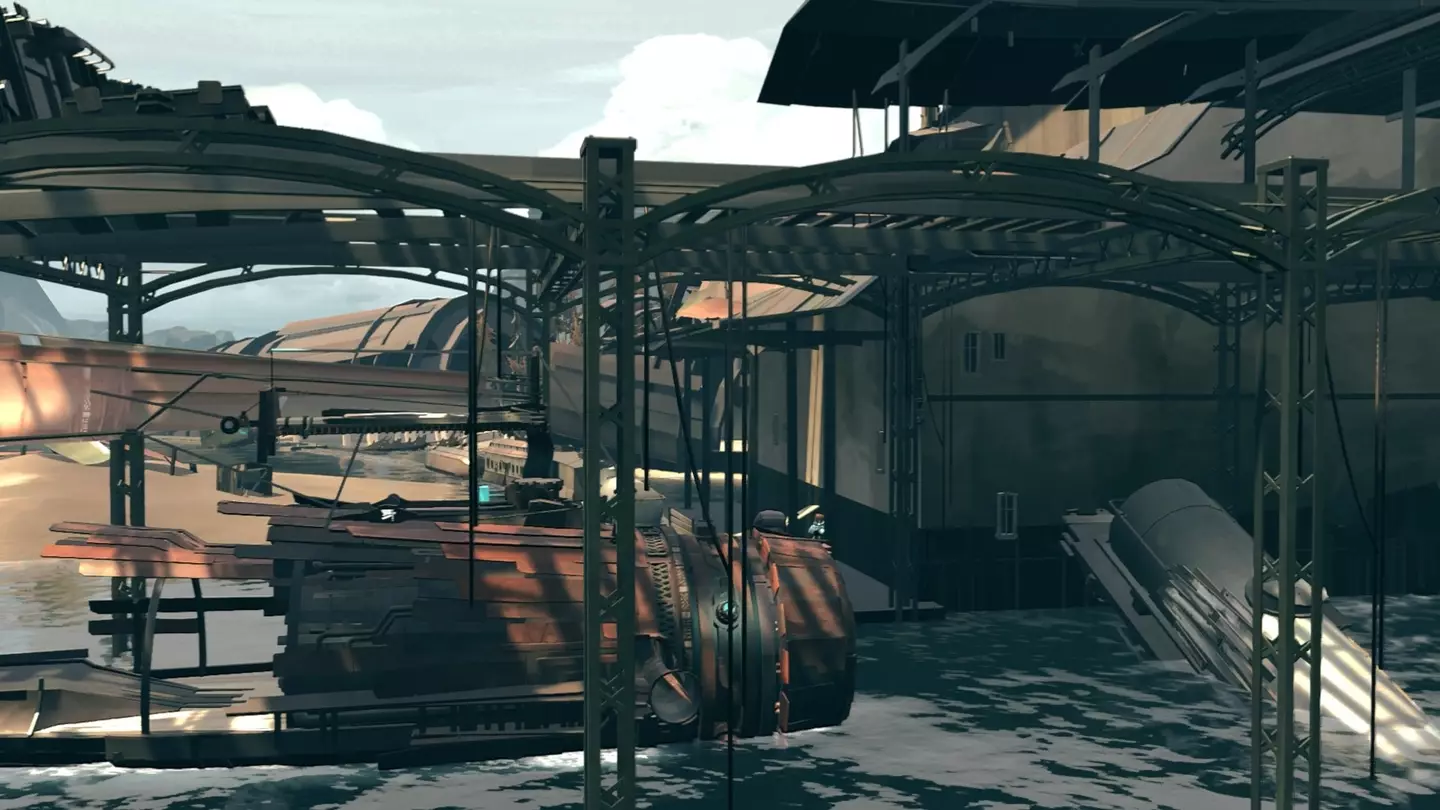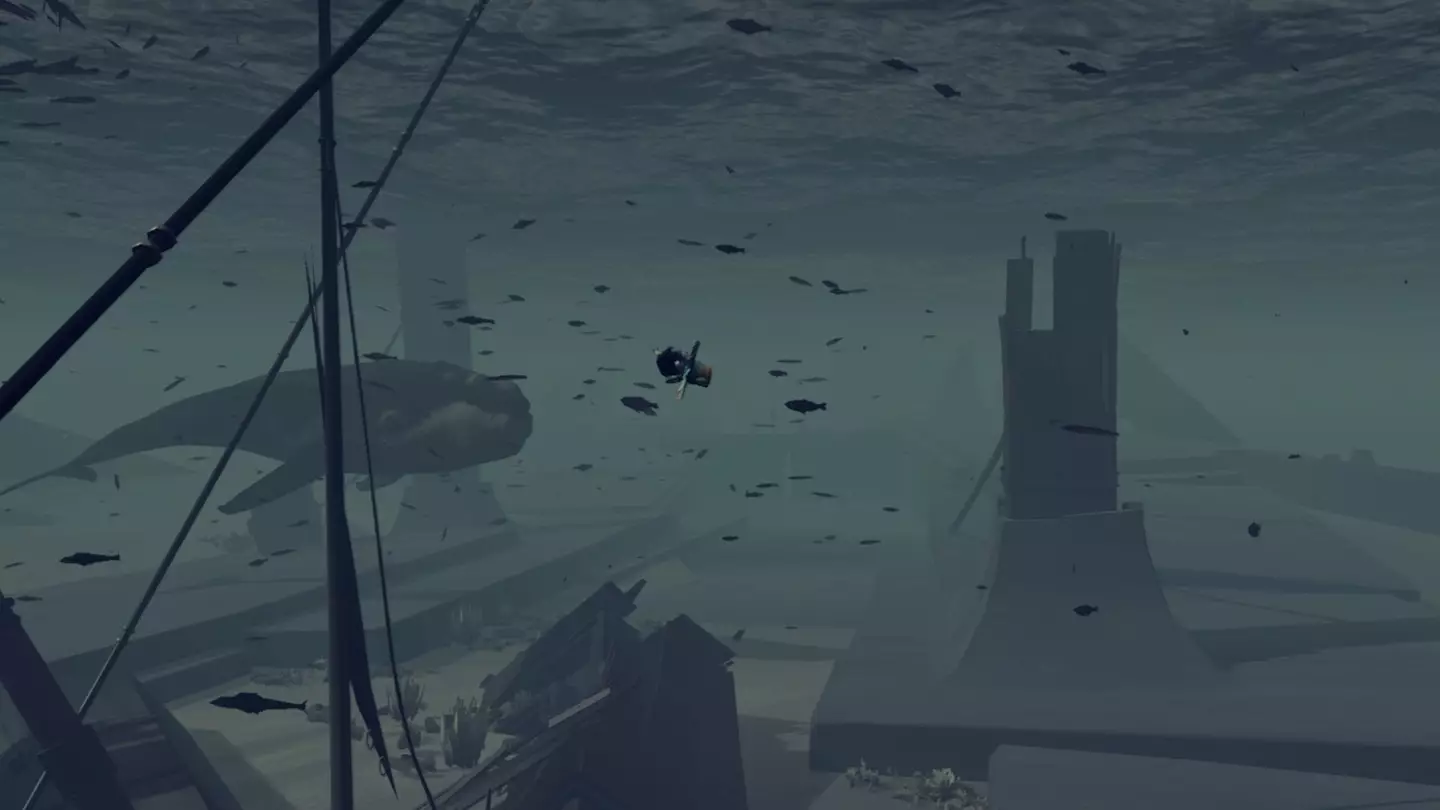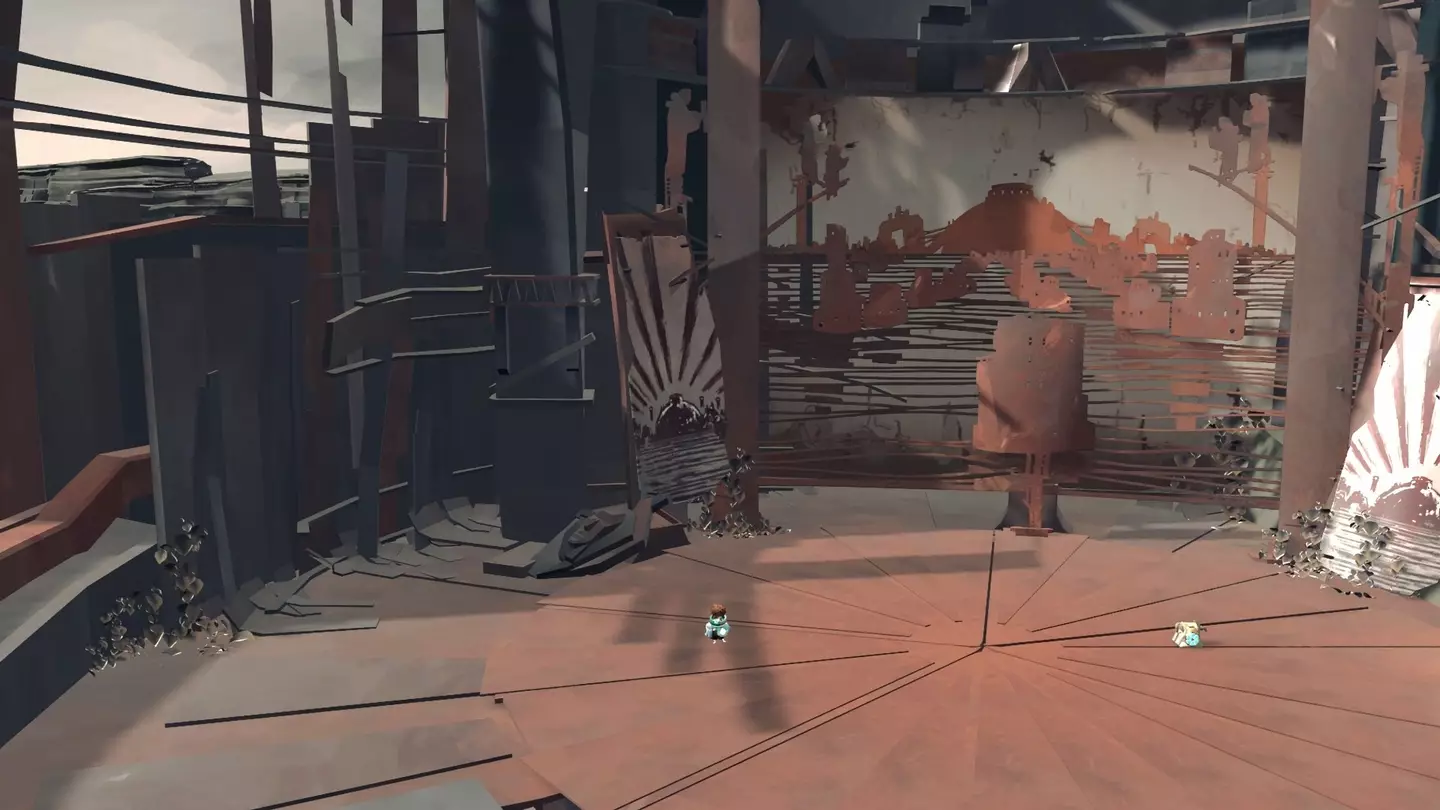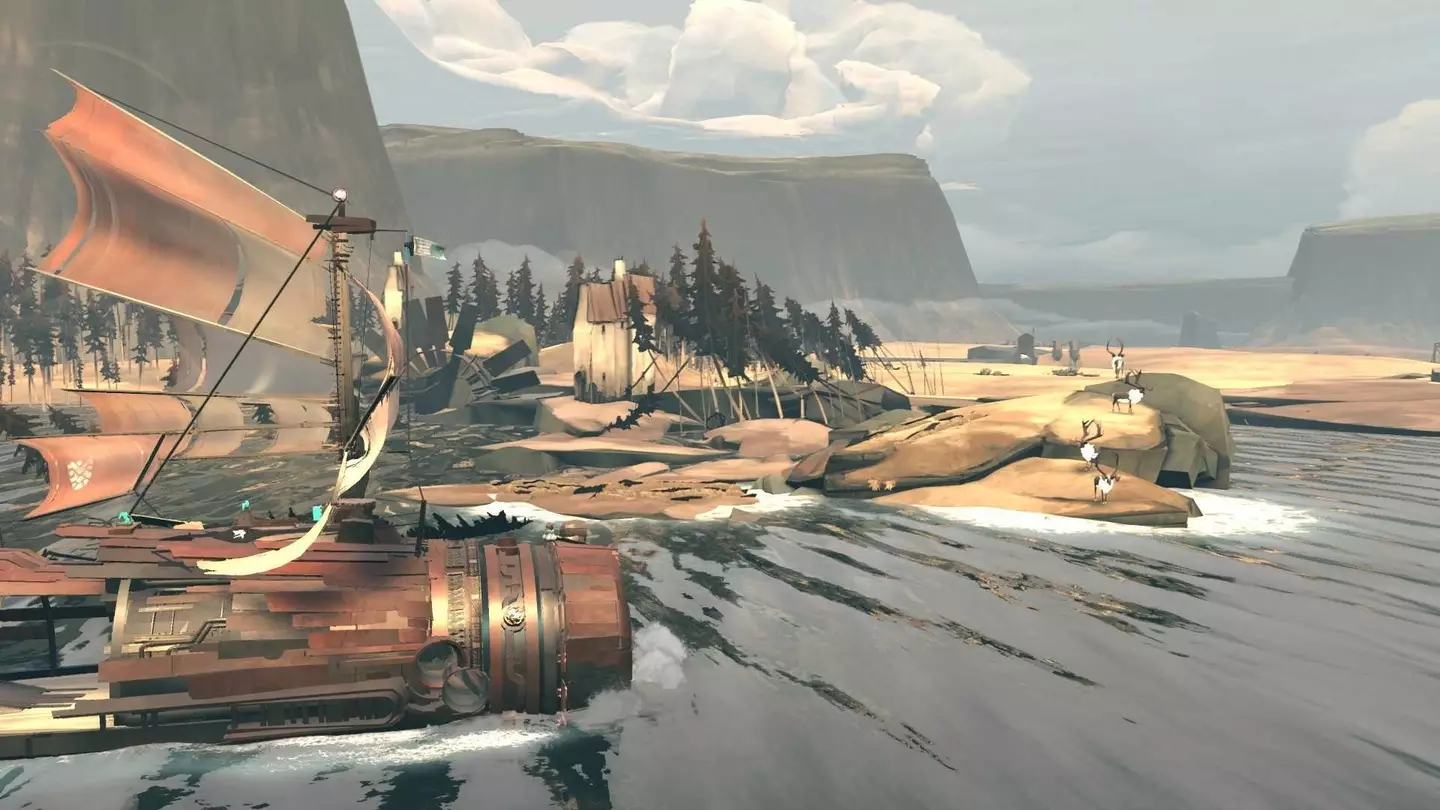
If you resonated with the vast and open landscapes of 2018’s indie hit FAR: Lone Sails, a side-on journey across post-apocalyptic wastes set to a sorrowful soundtrack that began as a university project, then the flooded environs of this sequel - all sunken cities, rusted machinery and suggestive flotsam - will immediately make a connection.
FAR: Changing Tides asks the player to assume the role of a small, red-headed boy in command of a large but distinctly ramshackle vessel, the aim being to pilot it from left to whatever awaits way off-screen to the right, on the other side of passages of introspective calm, ship-rocking tumult, and testing but never frustrating logic puzzles.
Watch a gameplay trailer for FAR: Changing Tides, below
How it plays moment to moment is much like its predecessor: the side of your expandable, upgradeable craft peels away when zoomed in, like sliding back the wall of a doll’s house, and you hop between various stations to maintain momentum. When the wind is whipping across the sparkling surface of the sea, you can raise your sails to catch it, rotating the vast sheets to best harness this force of nature. There’s an engine that can be fired up for when the doldrums descend, although it burns through fuel quickly and can overheat in no time at all; and after an early game upgrade is installed, your ocean-faring home away from home can descend beneath the waves, exploring the deep and the story-suggestive sights found there.
Advert
It’s the nature of your boat-cum-submersible that represents the most pronounced change here, from Lone Sails. Where developers Okomotive’s first game had your diminutive protagonist scrambling across a gargantuan land-based vehicle, here the action is often framed not by dead soil and forbidding sky but bubbles escaping upwards, the gentle sway of an unseen current and the distant moan of a passing whale. Gameplay wise, this is very much a case of if it isn’t broken, don’t fix it. Problem is: everything breaks.

Inside, it’s a familiar case of multi-tasking and micro management, as you dash between various switches and pumps, bellows and pulleys. Not one function on the ship is just a case of turning it on, and it just works. The engine needs to be supplied with things to burn in the furnace, its heat increased by pumping air into the flames, and then the boiler managed so that it doesn’t blow; and while that’s all going on, you must also direct the ship forwards or backwards, and upwards or downwards.
Even coasting on the surface isn’t plain sailing: the mast will pop up at the press of a button but the sails need a separate rope attached, running from crow’s nest to the deck, to have them fluttering proudly. Then there’s an ever-changing wind speed and direction to contend with; and there will be times when you must rapidly get everything down as an overhead pipe or some other obstacle leans too close to the water, making for a narrow passage that the mast would never fit through.

Regularly, parts of the ship fizz, splutter and smoke, becoming useless until repaired. Fixing them is easy - providing you have the tools to do so (you’ll always have the tools to do so, or be able to scavenge them) - but represents another thing to be mindful of, another responsibility to juggle as you lurch forever forward, chasing an unseen horizon for reasons the game never goes out of its way to make explicit.
Advert
When you need to leave the ship to search for supplies, swimming is effortless and your oxygen unlimited. Any progress-blocking outposts you come across - huge, hulking remnants of a society washed away, now oxidised a warm red and creaking with silent ghosts - are relatively easy to explore, even if the jump your character performs isn’t as precise as some sections would suggest it needs to be. (It’s a control I never quite clicked with, in my entire playthrough, missing ladders and falling down holes with a slightly annoying frequency.)

These pauses on your voyage, sliding out from the right side of the screen like a colossal stop sign, are where the game’s shore-leave puzzles are found. There are cranes to command, clanking chains to cross over as the wind does its utmost to send you flying, gates to power up and slide out of the way, and even airlocks to dock with (not that they’re free of the wet stuff, nowadays). Whether lifting obstacles free of your path or bringing power to previously dead mechanisms, these brain-teasers can be testing, but they never cross over into frustrating - the greatest annoyance being where you’ll miss your window to hit a certain button or lever because you have, again, fallen off the ladder you needed to get there. Your mileage may vary of course, and perhaps the fidgety movement of the game’s protagonist isn’t the same on all platforms.
Throughout, the environment serves as your only notable insight into what happened here - why there are beasts on the cliffs overlooking your position, seabirds gliding past your mast and rays elegantly drifting past your portholes, but no humans, anywhere. Background colour is conveyed through Journey-like art on some walls, assuming you stop to look at it. There are discarded possessions, abandoned lodgings, makeshift places of rest and respite. You’ll sometimes find left-behind items you don’t want to burn, playthings that once brought joy but now only collect dust and rot.

All of these tiny clues add up to some sort of denouement, but like Lone Sails before it Changing Tides leaves a lot more unsaid than not. It’s more about the journey than the destination, and if you enjoy darting from buzzing control panel to sparking winch while taking a break from maintenance now and then to piece together solutions to grand-scale posers, that’ll be enough to see you through to the credits.
Advert
For those who need their games to be about something more tangible, to have a story told in audio logs and written lore, FAR: Changing Tides isn’t for you. Nothing convincingly clicks, plot wise, until its final hours, before which it’s enigmatic, melancholic and abstract - again, so much in the same vein as the game that came before it, albeit with a longer play time. Whether the freshness the new vehicle brings is enough for you to take a second trip, only you know - but even those who never experienced the barren flats of Lone Sails could well find the beauty in the compelling cataclysm of Changing Tides.
Pros: beautiful art and sound design, puzzles are testing without being annoying
Cons: character can be tricky to control, no way to manually save mid-puzzle and auto-saves can be several minutes apart
For fans of: FAR: Lone Sails, Inside, Lovers in a Dangerous Spacetime
7/10: Very Good
FAR: Changing Tides is released on March 1 for Nintendo Switch (version tested), PlayStation 4 and 5, Xbox One and Series X/S, and PC. Review code provided by the publisher. Find a guide to GAMINGbible’s review scores here.
Featured Image Credit: Frontier Foundry, OkomotiveTopics: Indie Games, Nintendo Switch
